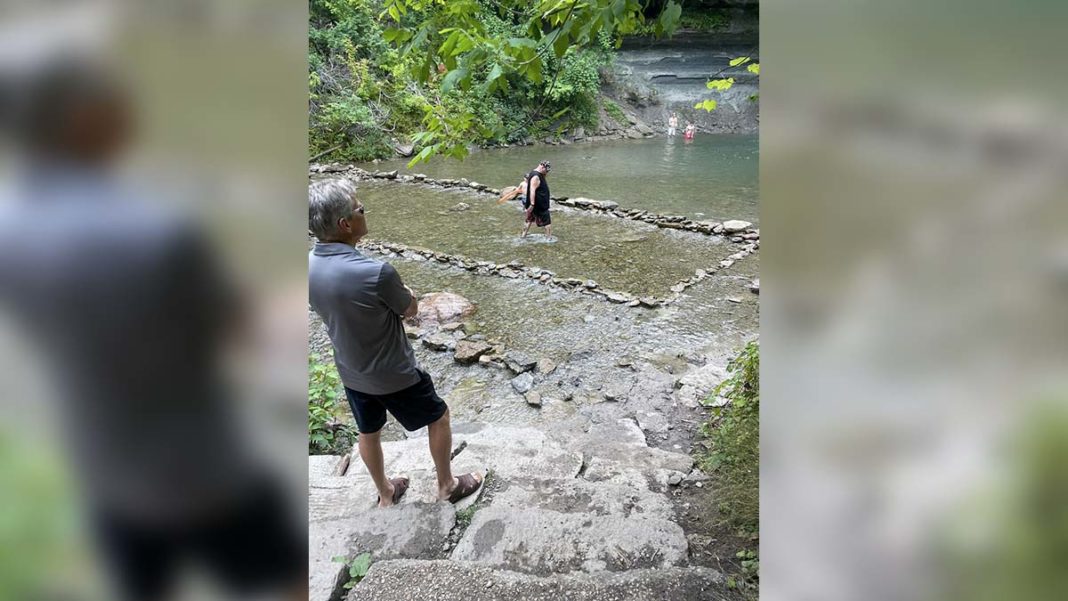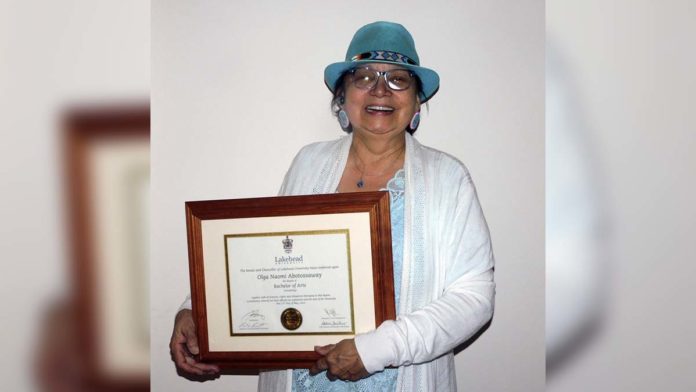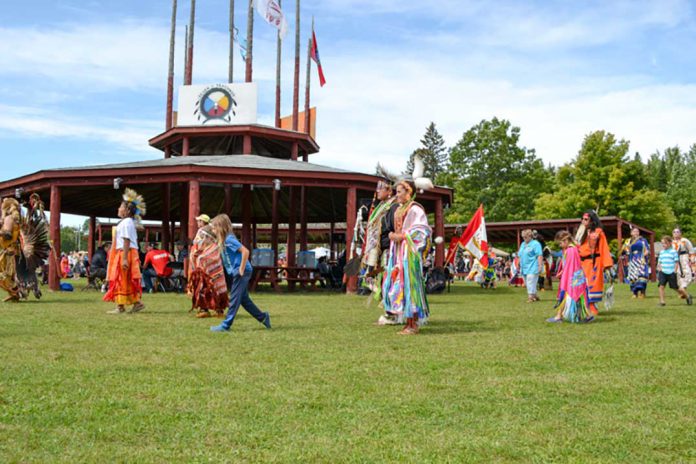KAGAWONG—While it has not caused grief to the fish that inhabit the Kagawong River, at least at this time of the year, the township of Billings, Manitoulin Streams Improvement Association (MSIA) and Ministry of Natural Resources (MNR) officials will be meeting in the near future to look at ways to provide education to visitors of the Bridal Veil Falls on why leaving the river materials in their natural state is paramount. This comes after a rock barrier structure had been set up in a section of the falls area last week that drew public concern.
“I’ve never seen that before in the municipality where rocks have been laid out on a section of the river in a rectangular shape,” said Ian Anderson, mayor of Billings Township, who pointed out there is existing provincial legislation in place that prevents members of the public from removing or adding to the water’s bottom, where it can affect water flows, fish and other species. He pointed out it looks like someone had taken large rocks to make a small pool for a child to swim in. “Almost every year we have seen where people have put rocks down on water bottom to create a food path from the river trail to the other side of the water.”
Mayor Anderson said the structure has been removed from the river and indicated it probably wouldn’t have caused any grief as the fish are not spawning yet. He explained salmon would not be spawning in the river until near the end of September or the start of October and beyond, and crayfish spawn in the bottom part of the river (from the power station).
“Maybe signage educating people that they shouldn’t be adding or taking away from the stream bottoms would be appropriate in this case,” said Mayor Anderson. “We will be talking to Manitoulin Streams and the MNR on the options and maybe as a municipality we could help to create a sign to education members of the public. Signs work for some things and not others. It is our experience that with the no parking signs by the falls, signs don’t always alleviate the problem. But it would be worthwhile to make an effort to educate members of the public.”
Derrick Luetchford, of the MNR, told The Expositor “We received a call last week from a person who was pretty upset about the structure, and I was talking to Seija (Deschenes of MSIA) on Monday. Seija was talking about taking proactive steps to hopefully prevent this type of thing happening in the future, such as collaborating on signage with the municipality as well. It would be more of an educational message.”
“I received a picture of the structure; it looked someone was trying to set up a small pool out of rocks,” said Ms. Deschenes. “Anything that is put in place that obstructs water flow, reducing it down stream, along with less rain fall, can mean areas downstream for habitat spawn are not being covered, not only for fish but all species, invertebrates, crayfish and others.”
“The Chinook salmon usually come up the river in the fall, and coho salmon a little later,” said Ms. Deschenes. “It would make it hard for salmon to get upriver if the water depths are low. We are getting in touch with the municipality and the MNR and maybe signs with a positive message explaining the impacts (of disrupting water flows) could be put up.”
“People need to know that any actions to reduce the water flow and depths can have a lot of impacts on the river and the ecosystem,” said Ms. Deschenes. She said another concern on the river occurs when the salmon start moving up the river and spawn, and members of the public will walk along the river and grab the salmon. “These fish are at the end of their life cycle after spawning.”





